
|
|
NIGER
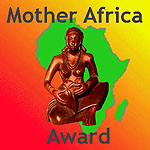
|
|
|
|

|
|
|
Official Name
|
République du Niger
|
|
Located
|
Central Africa: Algeria, Mali, Nigeria, Chad
|
|
Capital
|
Niamey
|
|
Head of State |
President S.E Mamadou Tandja
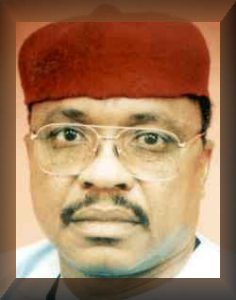
|
|
Area
|
1,267,000 sq km
|
|
Population
|
10 million
|
|
Growth rate
|
3.4%
|
|
Official language
|
French, Hausa & Djerma
|
|
Currency
|
Central African CFA francs
|
|
GNP per capita
|
$750
|
|
Inflation
|
4%
|
Airlines
(advertise here)
|
from Europe: Air France
from Asia: ________________
from USA: ________________
|
Hotels
(advertise here)
|
Names & Rates per night
______________________
______________________
|
|
USAfrica Agent
|
______________________
|
|
Country Advertiser
|
If you want to become
the Country Advertiser
your logo comes here.
|
|
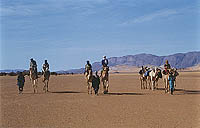
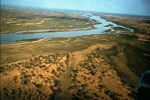
Niger River
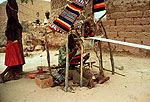
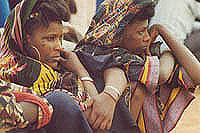
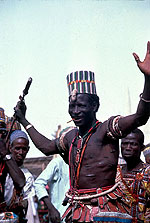
Sharo Match Veteran
|
|
|
Niger is one of the most fascinating countries of West Africa. Markets where cattle, camels and a range of other goods have been traded for centuries, are some of the most exciting in Africa. The Agadez region is renowned for its internationally famous Cure Salee. This intriguing festival is held in August or September after the rains, somewhere to the west of Agadze. Bororo males, of the nomadic Fula group, in a ceremony called the Gerewol, adorn and beautify themselves so that only the most obstinate female will refuse their advances. The virility test, the Soro is another story altogether. Read lots before you come and realize that it is very difficult for outsiders to witness these events. Niger suffers from one of the world's highest infant mortality rates. Roughly 25 percent of children under the age of two are malnourished.
Niger is a fairly unknown country. But who ventures to travel to this corner of the world will surely be impressed by the beautiful landscape, the diverse and interesting people and the colourful markets. The landscape is especially characterized by the Sahel and the Sahara. The Ténéré desert and the mountain range situated in this desert, the Aïr mountains, are exceptionally beautiful. Wild rock masses, dunes of hundreds of meters high and fertile green oasis can be seen here. Here one can meet very special nomad peoples like the Touareg, the Wodabé and the Bella. On the markets of Niger one is still able to find many traditional merchandize like pillars of salt from the desert, medicinal herbs, leather touareg tents, pottery jars and gourds. The social function of the markets is very important. They offer the perfect occasion to exchange the latest news, to meet the family members and to arrange marriages. Especially young men and women dress up to the nines to go to the market. The fauna of Niger also offers great variety: it is the home of the last giraffe colony in West Africa and in the W Game Park one will be able to see an impressive collection of game.
|
Agadez:
Agadez is a real desert city. Since the middle ages it has been a stopping place for caravans. A walk through the old quarter will bring you to clay mosque. From the minaret you will have a beautiful view of the city and you can see the mountains of the Aïr. The palace of the sultan is situated close to the clay mosque. It is the only 3 story-building in the city. When the sultan is seated in the court yard, it is possible to be received in audience. In the old quarter one can visit a former bakery with interesting wall paintings and relief sculptures, as well as the house where the explorer Heinrich Barth would lodge. On the markets of Agadez one can find a diverse range of products. Imported articles like fabrics, radios, stereos, blankets, pots and pans, but also traditional articles like dates, pillars of salt, medicinal herbs, camel saddles and camels. The colorful display of fruits and vegetables will catch the eye. These products come from the oases in the nearby Aïr mountains. Agadez is famous for its skilful silversmiths and leather craftsmen, whose workshops are all over the city.
Aïr mountains and Ténéré dessert:
|
In the middle of the desert the Aïr-plateau is located. The landscape varies continuously here: rugged rock groups, empty plains, green oasis with plenty of water, small villages with clay houses, nomad camps and enormous sand dunes. This area is inhabited by the Touareg. The Kel Ewey Toureg that live in the oasis, are a special group within the Touareg population. It is the only Touareg group that not only dedicates to cattle breeding but also to agricultural activities. During a visit to the gardens you will definitely be surprised by the crops that can grow here, in the middle of the desert. The presence of water and the relatively low temperature make that certain crops that can hardly be seen in any other part of West Africa can grow here, like for example grapefruits, mandarins, grapes and wheat. You can visit the mountains by jeep but you can also explore the surroundings alternating car, camel and walks. You can make tours of a minimum of 3 days up to 14 days or more. Various possibilities for camel or walking tours exist in this area. A tour of 4 or more days brings you to the remote villages on the Bagzane-platform, where the highest point in Niger is located: the Mont Bagzane, of 2050 m high. A camel tour of 3 to 12 days around the frontiers of the mountains and the Teneré desert will take you through a remarkable landscape of rocks and dunes that sometimes reach a height of 400 m. De Ténéré desert is one of the most beautiful sand deserts in the world. You can spend days here driving through an impressive, but desolate landscape of dunes and plains where you will not see people, animals or vegetation. Finally an oasis, a camel caravan, a platform or a village appears at the horizon. Here for example you can find the beautiful oasis of Bilma and Fachi, the mysterious deserted cities of Chirfa, Djanet and Djado, the fairytale-like platform of Djado and of course the before mentioned Aïr mountains.
Niamey:
Niamey is the capital city of Niger. It is located in the southwestern part of West Africa's second largest country along the Niger river. Niamey grew rapidly after World War II - there were about 2000 people living there in 1940, while today, it has a population of around 600,000. Today, it has most of the amenities of a modern capital city, but at the same time maintains a distinct Sahel character. It has an international airport and has road links with Benin and Nigeria. Most people in the city work in the service sector. Important buildings and institutions in the city includes the University of Niamey, National School of Administration, national museum, research institutes for geology, human sciences, oral tradition, tropical forestry and agriculture, veterinary studies
Tahoua:
Half way between Niamey and Agadez, on the edge of the Sahel and the Sahara is Tahoua. This little town is inhabited by a mixture of peoples. People like the Hausa and the Djerma, but also Sahara people, like the Touareg and the Wodabé have found a home here. The market with its remarkable atmosphere is worth a visit. There is a nice artisan market, where you will be able to find mainly Touareg artisan objects like colourful decorated leather, cloths, silver jewelry and products of soap stone.
|
|
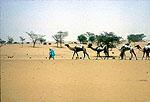
Caravan
©2002: Africa Focus
|
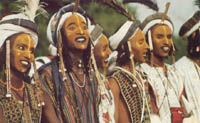
Wodabepeople
©2002: Africa Focus
|
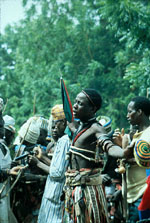
Fulbe Wrestler
©2002: Africa Focus
|
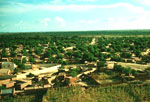
Doutschi
©2002: Africa Focus
|
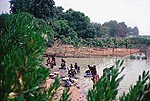
Washing
©2002: Africa Focus
|
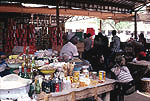
Market
©2002: Africa Focus
|
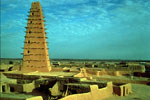
Agadez Mosque
©2002: Africa Focus
|
|
W Game Park:
In the The W Game Park one can come across elephants, lions, horse antelopes, dear, warthogs, baboons, etc. In the centre of the park there is a camp site with large tents with camp beds. This camp site is situated on a beautiful spot at the river Niger. Traditional boats are for rent to make little excursions on this part of the river, that has a very rich bird life.
Wodabé camp:
The Wodabé people are a special group in Niger. They belong to the larger group of the Peul, who live distributed over all West Africa. While other Peul groups have given up the nomad lives, have mixed with other groups and became fervent adherents of Islam, the Wodabé conserved their nomadic and traditional way of life. One of the most important festivities of the Wodabé, the Gerwool festival, takes place in September, to honour the end of the rainy season. These festivities and dances last several days. The climax of the festival is when the men make up their faces with red or ochre colours and dress in beautifully embroidered clothes and trousers of goat leather. At the end of the dance three women elect the most beautiful man of the festival. The prize is prestige and eternal fame. Fofo Afrique organizes group travels in September to these festivals. If your chosen dates don't cover September, you can still visit a Wodabé camp. You are offered the possibility to spent one or more nights in a nomad camp. There will be time for exchange of stories and songs and a group of men will perform various dances. If there are enough women together, they will also dance and sing. This is definitely not a standard tourist attraction, but an experience that is really unforgettable.
Zinder:
The second largest city in Niger and the former capital is Zinder, the most important city for the Hausa people of Niger. The Hausa come from North Nigeria and the South East of Niger, but you can come across these trading people all over Africa. It is for good reason that theirs is the most spoken language in Africa. The trading tradition is reflected in the old centre of Zinder, where you can still see the trading people's monumental clay houses with their facades decorated with stucco.
Economy:
Niger is a vast landlocked country with an estimated population of 10.3 million concentrated in a narrow band of arable land along its southern border. The economy is dominated by the rural subsistence sector and by the uranium-mining sector, which is the country’s principal foreign exchange earner and major source of government revenues. Agricultural production is the number one concern for villagers in Niger, a country with extremely variable rainfall and predominantly sandy soils, and protecting the fragile environment is not a priority for many local people. The growth record of Niger’s rural-based and poorly diversified formal economy is to a large extent determined by factors such as the climatic conditions, or the level of external assistance. Niger experienced a short-lived period of sustained growth in the late 1970’s, recording double-digit GDP growth rates in some years, when activity was stimulated by the uranium boom.
History:
|
|
|
Present-day Niger used to be occupied by the Songhai Empire in the west, Hausa kingdoms in central parts and the empire of Kanem-Bornu around Lake Chad to the east. These kingdoms traded in slaves, gold, and salt. Although their fortunes diminished during the French colonial years, trans-Saharan trade still continues, to some extent. The Niger region was penetrated early by Muslim missionaries for it was on the central caravan route from North Africa to the Hausa States and the empires of Mali and Songhai. The Hausa states were dominant in southern Niger from before the 10th century until the early 19th century, when they were overwhelmed by the Fulani Jihad led by Usuman dan Fodio. The Songhai Empire was the supreme power in the western part of the country for almost a thousand years , while the Kanem-Bornu Empire exerted a powerful influence in the east. In the 14th century, the Tuareg populated the Aïr Plateau, where they subsequently established the Sultanate of Agadez.
The Republic of Niger gained independence in August 1960. A long period of political instability following the National Conference in 1991 and political deadlock in 1995 between the President, the Prime Minister, and Head of National Assembly (each from different political parties) culminated in a military coup in January 1996. General Ibrahim Maïnasara Baré won the presidential election in July 1996, amidst charges of electoral irregularities. In the north and east of the country-armed rebel movements resisted repeated efforts to achieve peace agreements. Tension grew during the ensuing period of military rule, with opposition parties protesting increasing political manipulation and poor governance. In a context of mounting public anger over probable fraud in municipal and district elections early in 1999, and increasing salary arrears (up to a year’s back wages) in the public sector, President Baré was assassinated on April 9th of that year. A military junta led by Major Wanke took power, vowing to restore civilian rule by the end of the year 1999. A constitutional referendum successfully held on July 18, 1999 was followed by Presidential and Legislative elections on October 17, and November 24, 1999. The winning two-party coalition consisted of the MNSD (Mouvement Nigérien pour une Société de Développement), which had ruled the country in the one-party regime of the 80's, and the junior coalition partner CDS (Convention Démocratique Sociale), which had shared power in the former civilian Government episode of 1993 to 1996. President-elect Tandja (MNSD) was sworn in on December 22, 1999, and the newly elected National Assembly was inaugurated on December 26, 1999. Finally, a new Government headed by Hama Amadou (MNSD) was appointed on January 6, 2000, with the leader of the CDS, Mahamane Ousmane receiving the key position of President of the National Assembly. Since January 2000, the government has achieved political stability by ensuring the civil service wage bill is paid, and by successfully underpinning peace accords with rebel movements in both the north and east.
|
Enabling us to improve the quality of the content, if you have additonal information, remarks or suggestions, please share it with us by e-mail.
Last update: 24 April 2008
|











